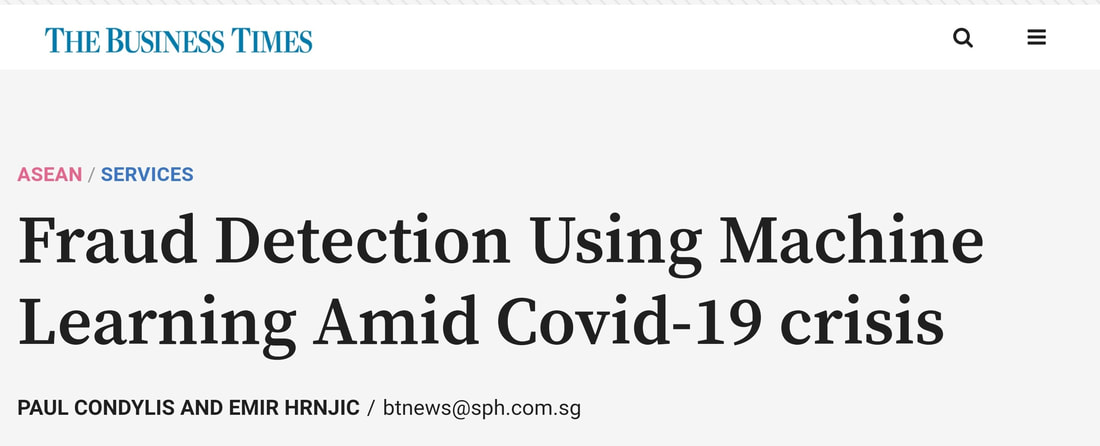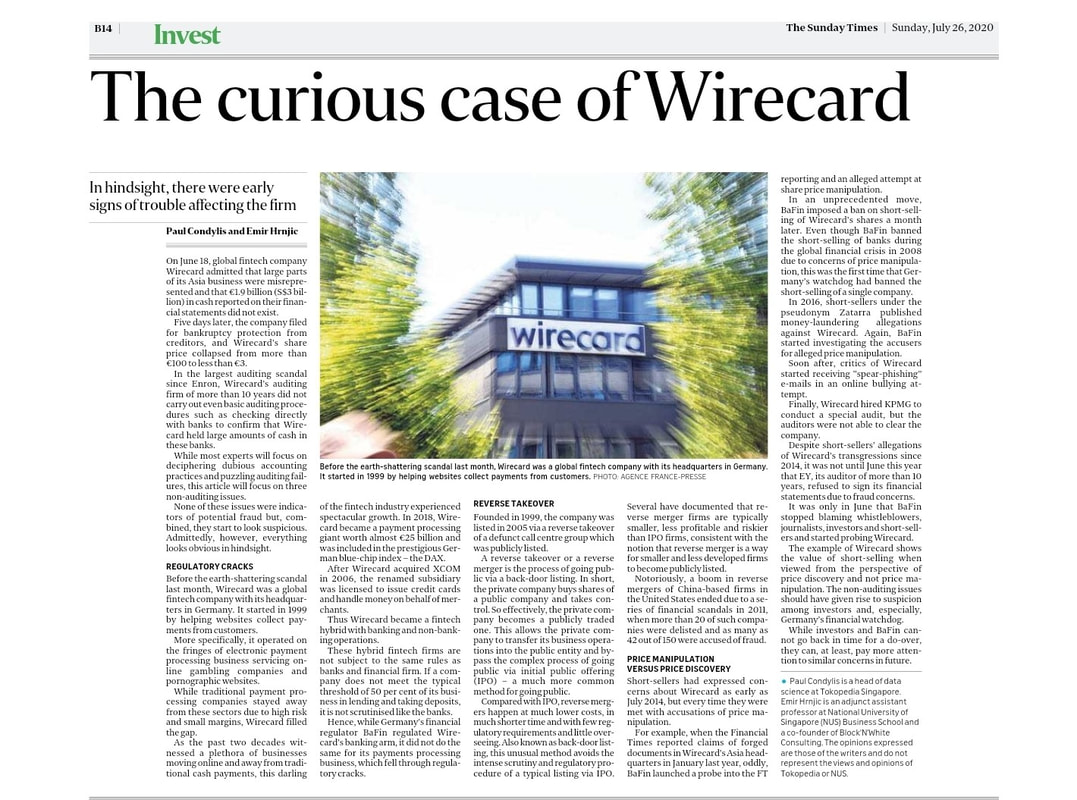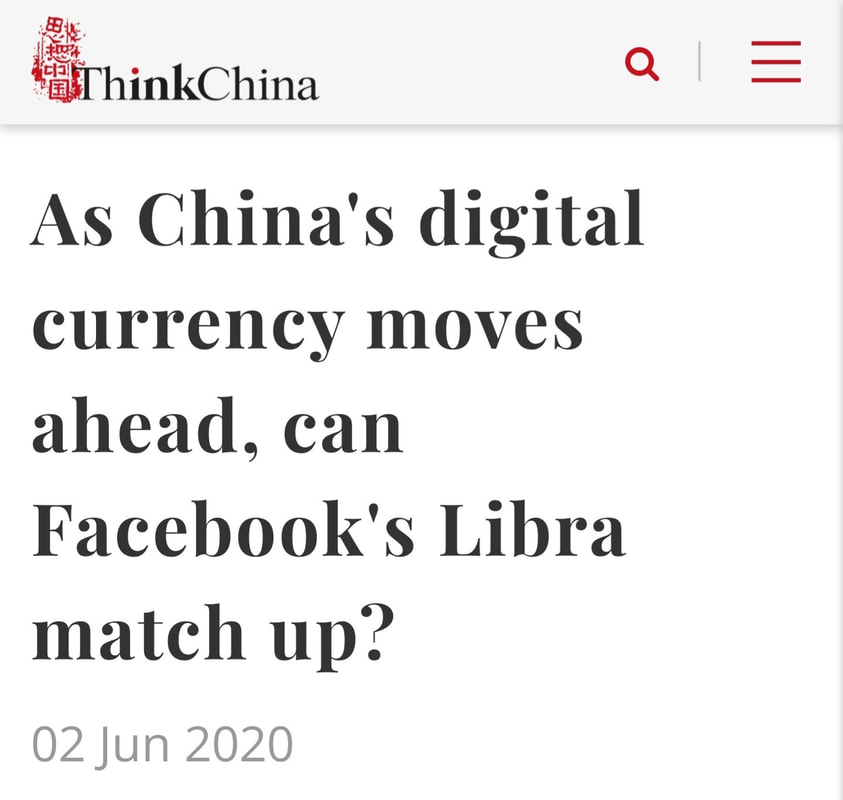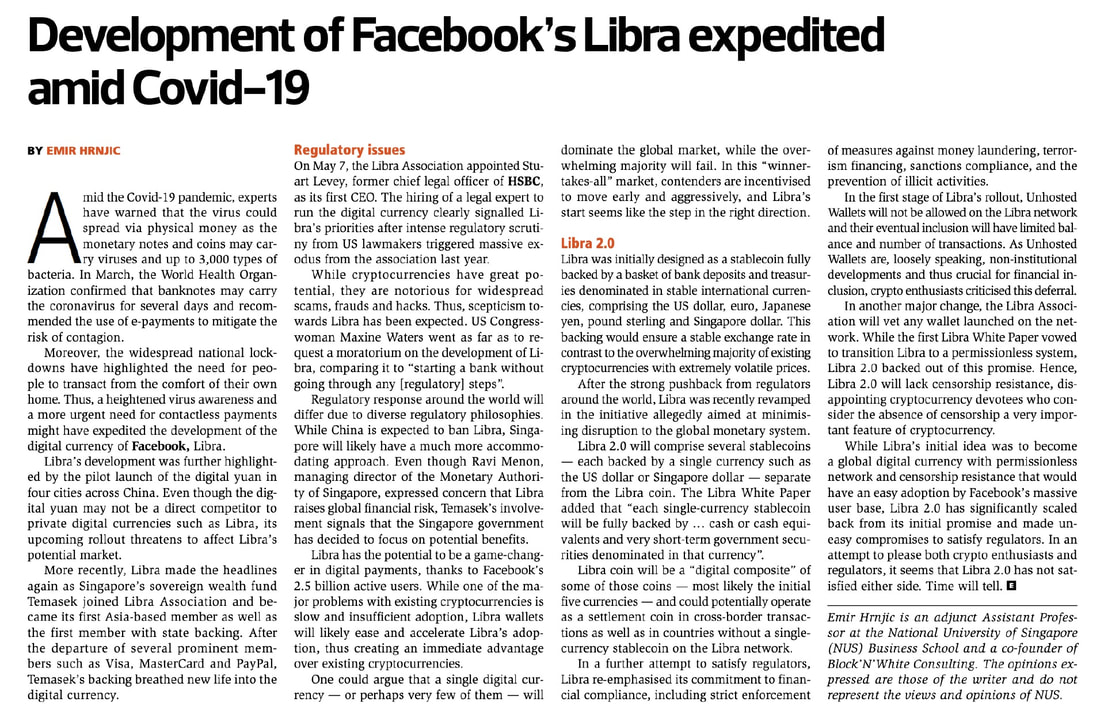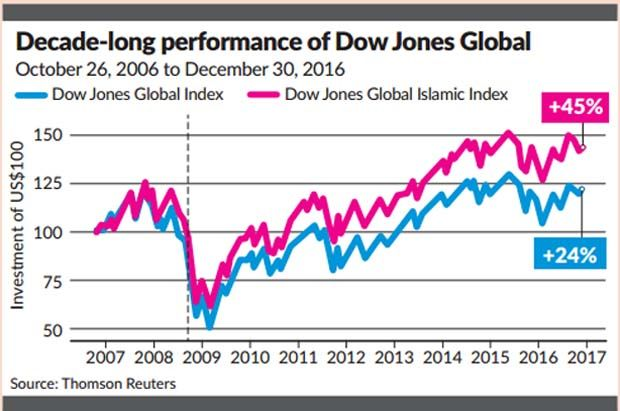Decentralised Finance in a centralised world (as published in Business Times on July 25, 2019)7/29/2019 Decentralized Finance in a Centralized World
By Emir Hrnjic and Nikodem Tomczak The growth of global financial markets has created enormous wealth, especially benefitting a few players who are closely connected to the world’s main financial centres. The centralized nature of the industry has enabled these powerful intermediaries to position themselves in the middle of the system and thus extract rents from other participants. This oligopolistic structure has stifled competition and decreased efficiency, while increasing the cost of financial services. Reflecting on this, Vitalik Buterin, one of the leading crypto gurus and co-founder of Ethereum, recently stated that moving money between accounts using banks is “insanely inefficient” and “international payments… [are] even worse.” The rapid development of blockchain technologies, however, combined with the spread of low–cost mobile internet access is disrupting this model. Together they are opening the way to exciting innovations and the emergence of the Decentralized Finance movement. Known as DeFi this rapidly growing movement aims to revolutionize existing financial services by creating decentralized applications on top of peer–to–peer networks, such as Bitcoin, that operate without intermediaries. One of its main objectives is disintermediation and disempowerment of rent–extracting middlemen by enabling direct peer-to-peer transactions. LOW TRANSACTION COST In 2015 Jamie Dimon, CEO of JPMorgan Chase, predicted that “Silicon Valley start-ups were coming to eat Wall Street’s lunch.” DeFi could be the manifestation of his prophecy. After blockchain developers struggled to design a killer application, DeFi looks poised to transform the finance sector by automating payments and loans. For example, Bitcoin enables peer–to–peer payments at very low transaction cost and very refined price granularity. A case in point is the recent purchase of an art piece for U$0.00000004143 which was transferred almost instantaneously using a payments network built on top of Bitcoin. To put this amount in perspective, consider that one billion of these pieces would cost just U$41.43. This shows DeFi’s potential for improving facilitation of micropayments, microloans, and opening up new monetization strategies used in pay–per–use subscription, gaming and online advertising. With DeFi, transaction costs typically do not scale with transaction amounts, allowing for transfers of tens of millions of dollars for less than a dollar - a rate unthinkable in the current centralized financial systems with numerous intermediaries. In addition, transactions can also be finalized much more quickly than traditional financial institutions allow. On the lending side, even though peer–to–peer crypto lending applications are in the nascent stage, their popularity has been growing at a rapid pace. DeFi lending taps into the blockchains’ ability to settle transactions using smart contracts instead of an intermediary, significantly reducing counterparty risk and cost. At the same time, typical annual percentage rates are lower than those available from traditional lenders. Moreover, since no credit checks are performed on some platforms, DeFi–enabled lending has the potential to reach many more people – especially in developing markets. BUILDING ON BITCOIN The impact of DeFi on financial services then is potentially vast. DeFi benefits from the disruptive spirit that has driven innovation in Bitcoin, helping to build strong relationships between people and financial service providers. Bitcoin, for example, has enabled the electronic transfer of value without middlemen. The trust element of Bitcoin is gained through open access to its public ledger, which does not depend on an intermediary to protect and secure its records which are instead guarded by cryptography. As a result, DeFi, just like Bitcoin, is less prone to manipulation and, hence, more resistant to censorship. Openness and public access to the ledger implies improved transparency and inclusiveness – two principal factors that strengthen and democratize financial relationships between individuals, corporations, and government organizations. DeFi can simplify access to financial products regardless of where people live or how wealthy they are, opening up the potential to contribute to finance at every level of society. Furthermore, open–source code of the underlying technology and permissive copyright licenses encourage continuous innovation. For example, smart contracts – pieces of code that reside on the blockchain and enable decentralized financial applications – automatically execute essential tasks. This predictability reduces the cost of doing business, while transparent recording of transactions and auditable contract code decrease the likelihood of disputes. GROWING PAINS There are however certain trade-offs associated with building decentralized applications on top of public blockchains, among them low transaction processing rates and the high cost of maintaining a secure ledger. Currently, there are relatively few crypto custody services which are important for those investors who are not technologically savvy enough to directly use DeFi applications. Furthermore, the notoriously poor user experience in the blockchain space urgently needs attention. Better product design and user-friendly apps would go a long way towards building wider adoption. Then there are specific issues related to different applications. For example, whilst many crypto investors have raved about crypto–lending leader MakerDAO, some borrowers have been shocked by its sudden spike in interest rates – from an annual rate of 0.5 percent to almost 20 percent. Finally, as with all revolutionary technologies, regulatory uncertainty has haunted blockchain technologies since their inception. Conflicting messages from regulatory bodies regarding licensing requirements for exchanges will continue to slow down DeFi adoption. Overall DeFi is a novel and promising development that has a potential to transform the current financial systems by overtaking rent–extracting intermediaries and, thus, reducing costs of services. More specifically, it appears that DeFi is poised to impact payments and lending, while posing a serious competitive threat to traditional finance firms. DeFi undoubtedly has huge potential in improving financial inclusion. However, its technical complexity and many moving, interacting parts require careful assessment. Whilst the promised benefits are substantial, a treacherous path toward widespread adoption lies ahead.
1 Comment
|
